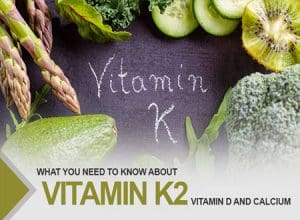

We all know the story right? All disease begins in the colon or gut, and all chronic disease states are inflammation driven.
In more technical terms, this phenomenon is called intestinal permeability. Whether we call it leaky gut or intestinal permeability, it is a condition when the tight junctions that join the cells that make up the walls of the small intestine (these cells are called ‘enterocytes’) separate sufficiently to create a gap or pores that allow undigested food to pass through.

In normal conditions, these pores form to allow bacteria, viruses, and parasites to pass through where a layer of T cells effectively digests them. However, food particles do not present with recognizable cells walls so that the immune system (T cells) does not know what to do with them. These pass into the portal circulatory system and eventually the general circulation. These particles set off an immunologic cascade leading to inflammation.
The immune system signals Natural Killer (NK) cells to gobble up (digest) these unwanted food particles. NK cells are the top predators of the system, are larger in size than any other immune cells, but work with a cost. The resource cost is part the actual production of these large predatory cells but mostly with the outcome of their actions.
In the aftermath of the digestion of these food particles in the blood, the NK cells secrete perforins and other interferons, while granulocytes leave a significant trail of reactive oxygen species (ROS) or more commonly referred to as ‘free radicals’.
Zonulin
The discovery of zonulin by Fasano et al:
The developmental role of zonulin: cholera
The triggers for up-regulating zonulin: stress, gluten, toxins (pesticides, household cleansers, and more):
The leaky gut story received a huge scientific boost thanks to the work pioneered by Dr. Alessio Fasano, MD, a noted pediatric gastroenterologist and research scientist working at the University of Maryland. In summary, he discovered a protein and named it Zonulin, which it is the actual protein responsible for leaky gut. Zonulin is a protein secreted in the gut that latches onto the enterocytes, triggering the opening of the tight junctions, resulting in the pores we know as leaky gut.
It turns out that Zonulin has an evolutionary purpose. Back in the day when humans were hunter-gatherers, they lacked the storage techniques that we take for granted, like refrigeration, vacuum-sealing, preservatives, and such. Food-related infections were significant contributors to disease as humans evolved. The response to these infections was the evolution of a mechanism that allowed bacteria and viruses to pass out of the gut to avoid intestinal insults. Thus, Zonulin was born.
Fasano et al has elucidated both the ligand (the messenger molecule) (in this case, Zonulin) and its receptor and the subsequent physiological reactions leading to the opening of the tight junctions. These were reported in a landmark July 2009 issue of Scientific American along with a host of preliminary top-flight scientific journal articles which started in 1998. These dates are noteworthy that the scientific explanation occurred only recently because the medical community did not grow up learning about it.
As interesting as the discovery itself, are the triggers that affect the secretion of Zonulin. It turns out that there are a number of triggers for secretion, some of which can be modified by behavior and supplementation. The leading triggers are stress, gluten, certain chemicals, toxins, and related substances.
COLOPERM’ POWDER : Spirulina 350 mg, L-Glutamine 750 mg, Calcium-D-Glucarate 167 mg, Magnesium Amino Acid Chelate 1099 mg, Bromelain 200 mg, Curcuma longa (Tumeric) 200 mg, MSM 80 mg, Gamma oryzanol 100 mg, Vitamin C (Ascorbic Acid) 492.5 mg, Alpha-lipoic acid 492.5 mg, Hydrastis Canadensis (Golden seal) 20 mg, Vitamin B3 (Nicotinamide) 20 mg, cysteine 10 mg, L-Glutathione 10 mg, Biotin 0.3 mg, Vitamin E 50% 420 mg, Vitamin B5 (Ca-D-Pantothenate) 5 mg, Manganese amino acid chelate 34.5 mg, Zinc amino acid chelate 30 mg, Vitamin B6 (Pyridoxine HCI) 1.5 mg, Vitamin B1 (Thiamine) 0.5 mg, Vitamin A 1.5 mg, Folic acid , Selenium amino acid, Vitamin B12(0.1%) 1.5 mg, Molybedenum amino acid chelate,Rutine 150 mg, Quercitine 150 mg (Powder)
Watch Dr. Golding talk on Integrative and Anti-Aging Medicine.
Sign up for our newsletter to find out more about the exciting world of integrative medicine
